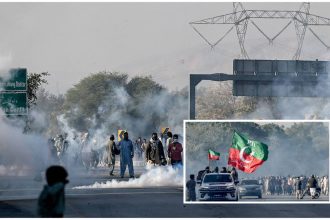With this decision, Ogra has backed off from its earlier stance that called for building LNG pipelines by utilising Rs183 billion that were collected from the consumers after the levy of gas infrastructure development cess (GIDC), which was meant for gas import projects.
This came after the Economic Coordination Committee (ECC), headed by Finance Minister Ishaq Dar, decided to recover the money from the consumers through revenue requirements of gas utilities. However, this has placed a question mark over the autonomy of the regulator.
In the first phase, the regulator has allowed Sui Northern Gas Pipelines Limited (SNGPL) to recover Rs43 billion for the LNG pipeline projects. The company had sought approval for Rs58 billion.
However, Ogra has yet to take a decision on the request of Sui Southern Gas Company (SSGC) that requires Rs40 billion for laying the LNG pipelines.
According to the officials, the gas utilities also wanted a 17.5% guaranteed rate of return on the LNG pipeline assets, which would lead to an astronomical rise in consumer gas prices.
The government has so far received Rs183 billion on account of GIDC but, the officials say, it was spent on projects like Metro and Orange Line. Consequently, the Ministry of Petroleum and Natural Resources is finding it difficult to arrange equity for the LNG Gwadar pipeline and the Tapi gas pipeline.
Earlier, the matter was taken up with the Ministry of Finance where it pushed the utilities to seek Rs101 billion in bank loans and assured them of the government’s guarantee.
Ogra has also given approval for the 17.5% rate of return on assets sought by the gas utilities, which will force the consumers to pay an extra Rs36 billion.
At a press conference a couple of days ago, Petroleum Minister Shahid Khaqan Abbasi revealed that gas production in the country had dropped by 550 million cubic feet per day (mmcfd) as reserves were falling.
This indicates that there will be no gas for the new consumers that will be connected to the extended pipeline network. However, the consumers will be paying higher prices because of the increase in assets of the companies.
The petroleum ministry has insisted that it is aggressively making efforts for LNG import to bridge the shortfall as a short-term measure.
Work on the import of 1,200 mmcfd of LNG is being undertaken, but the existing pipelines have the capacity to handle up to 400 mmcfd. Of this, 280 mmcfd could be shipped to the SNGPL system and 120 mmcfd to the SSGC network.
Both the companies have embarked on infrastructure development projects for handling LNG and anticipated higher domestic gas supplies. These are expected to be completed by December this year in two phases depending on availability of funds.
SNGPL and SSGC have already arranged funds from commercial banks for the first phase and are seeking financing for the second phase.





